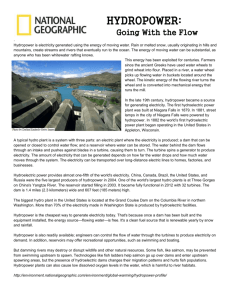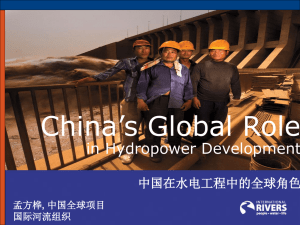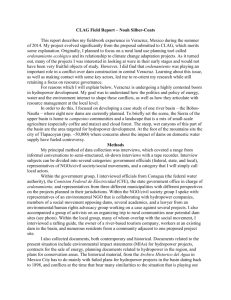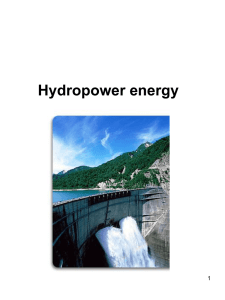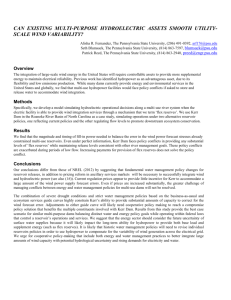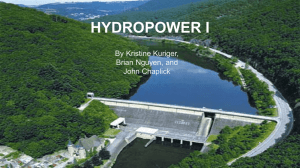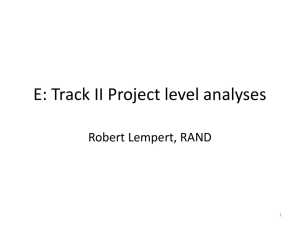Hydropower
advertisement
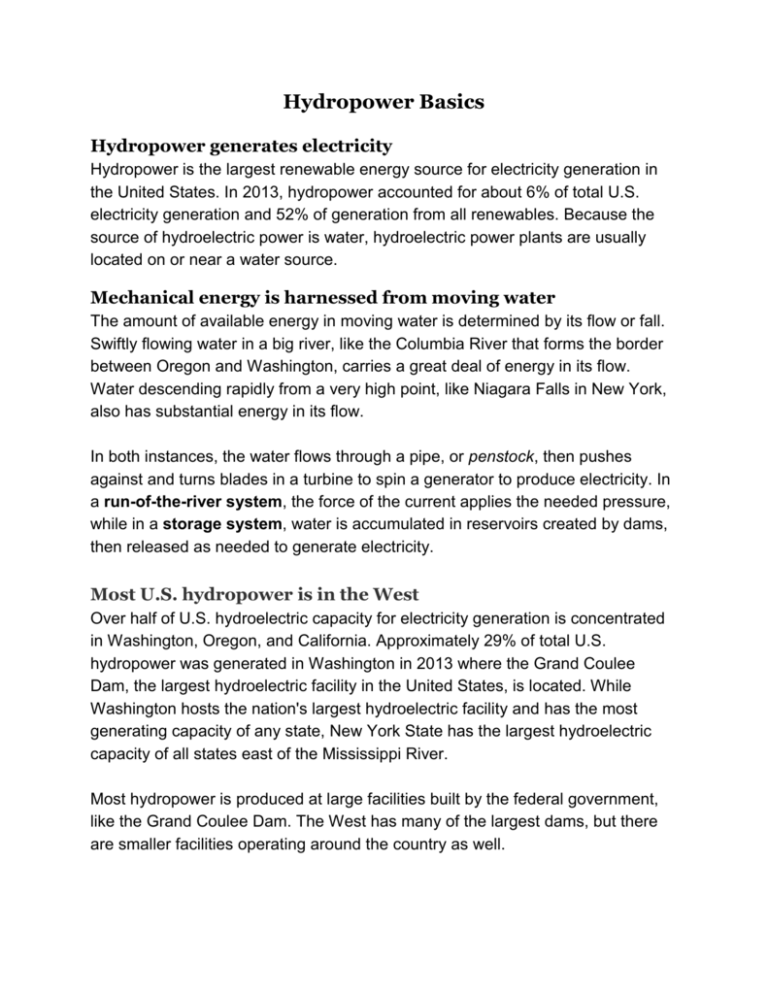
Hydropower Basics Hydropower generates electricity Hydropower is the largest renewable energy source for electricity generation in the United States. In 2013, hydropower accounted for about 6% of total U.S. electricity generation and 52% of generation from all renewables. Because the source of hydroelectric power is water, hydroelectric power plants are usually located on or near a water source. Mechanical energy is harnessed from moving water The amount of available energy in moving water is determined by its flow or fall. Swiftly flowing water in a big river, like the Columbia River that forms the border between Oregon and Washington, carries a great deal of energy in its flow. Water descending rapidly from a very high point, like Niagara Falls in New York, also has substantial energy in its flow. In both instances, the water flows through a pipe, or penstock, then pushes against and turns blades in a turbine to spin a generator to produce electricity. In a run-of-the-river system, the force of the current applies the needed pressure, while in a storage system, water is accumulated in reservoirs created by dams, then released as needed to generate electricity. Most U.S. hydropower is in the West Over half of U.S. hydroelectric capacity for electricity generation is concentrated in Washington, Oregon, and California. Approximately 29% of total U.S. hydropower was generated in Washington in 2013 where the Grand Coulee Dam, the largest hydroelectric facility in the United States, is located. While Washington hosts the nation's largest hydroelectric facility and has the most generating capacity of any state, New York State has the largest hydroelectric capacity of all states east of the Mississippi River. Most hydropower is produced at large facilities built by the federal government, like the Grand Coulee Dam. The West has many of the largest dams, but there are smaller facilities operating around the country as well. Hydropower generators produce clean electricity, but hydropower does have environmental impacts Most dams in the United States were built mainly to control floods and to help supply water for cities and irrigation. A small number of dams were built specifically for hydropower generation. While hydropower generators do not directly produce emissions of air pollutants, hydropower dams, reservoirs, and the operation of hydropower electric generators can affect the environment. A dam that creates a reservoir (or a dam that diverts water to a run-of-river hydropower plant) may obstruct fish migration. A reservoir and dam can also change natural water temperatures, water chemistry, river flow characteristics, and silt loads. All of these changes can affect the ecology and the physical characteristics of the river. These changes may have negative impacts on native plants and on animals in and around the river. Reservoirs occasionally cover important natural areas, agricultural land, or archeological sites. A reservoir and operation of the dam may also result in the relocation of people. The physical impacts of a dam and reservoir, the operation of the dam, and the use of the water can change the environment over a much larger area than the area covered by a reservoir. While no new hydropower dams have been built recently in the United States, they are being built in other countries like China. Manufacturing the concrete and steel used to construct these dams requires equipment that may produce emissions. If fossil fuels are used as the energy source to make these materials, then the emissions from the equipment could be associated with the electricity that hydropower facilities generate. However, given the long operating lifetime of a hydropower plant (50 years to 100 years) these emissions are offset. Greenhouse gases, carbon dioxide, and methane may also form in reservoirs and be emitted into the atmosphere. The exact amount of greenhouse gases produced from hydropower plant reservoirs is uncertain. The emissions from reservoirs in tropical and temperate regions, including the United States, may be equal to or greater than the greenhouse effect of the carbon dioxide emissions from an equivalent amount of electricity generated with fossil fuels. Scientists at Brazil’s National Institute for Space Research designed a system to capture methane in a reservoir and burn it to produce electricity. Fish ladders help salmon reach their spawning grounds Hydro turbines kill and injure some of the fish that pass through the turbine. The U.S. Department of Energy has sponsored research and development of turbines that could reduce fish deaths to less than 2%, in comparison to fish kills of 5% to 10% for the best existing turbines. In the Columbia River, along the border of Oregon and Washington, salmon must swim upstream to their spawning grounds to reproduce, but the series of dams along the river gets in their way. Different approaches to fixing this problem have been used, including the construction of fish ladders that help salmon move through the dam to the spawning grounds upstream. http://www.eia.gov/kids/energy.cfm?page=hydropower_home-basics

